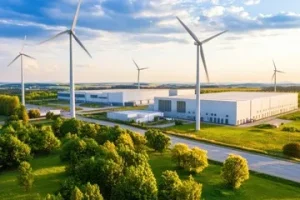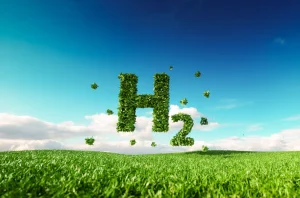The Future of Green Hydrogen Plants: Innovations to Watch in 2025
As the world accelerates its shift toward clean energy, green hydrogen has emerged as a frontrunner in achieving net-zero emissions and energy security. With its ability to decarbonize industries, fuel transportation, and store renewable energy, green hydrogen is no longer a futuristic concept—it is becoming a critical player in global energy systems.
In 2025, the landscape of green hydrogen plants is poised to undergo transformative changes driven by cutting-edge technological innovations, scaling strategies, and cost optimization. Let’s explore the key innovations that will define the future of green hydrogen plants and solidify their role in a sustainable energy economy.
- Next-Generation Electrolysers: Scaling Up Efficiency
At the core of every green hydrogen plant lies the electrolyser, the technology that splits water into hydrogen and oxygen using renewable energy. In 2025, advances in electrolyser technologies—particularly PEM (Proton Exchange Membrane) and alkaline electrolysers—will significantly enhance efficiency and scalability.

- Higher Energy Efficiency: New electrolysers are achieving efficiencies beyond 80%, minimizing energy loss during hydrogen production. Innovations in membrane technology and electrode materials are reducing energy input while maximizing hydrogen output.
- Modular and Gigawatt-Scale Designs: Electrolyser systems are being designed to scale from megawatt to gigawatt capacities to meet the rising demand for green hydrogen, particularly in industries and energy storage. Modular designs allow easy deployment, cutting construction time and costs.
- Cost Reduction: Innovations in materials, such as using non-precious metals in electrolyser components, are driving down production costs. Analysts predict a 30-40% cost reduction in electrolyser systems by 2025, making green hydrogen increasingly affordable.
For India, where abundant solar and wind energy can power electrolysers, these advancements will help produce green hydrogen at a globally competitive cost.
- Renewable Energy Integration: Hybrid Power Models
One of the key challenges in green hydrogen production is the intermittent nature of renewable energy sources. Innovations in hybrid power models—integrating solar, wind, and battery storage—will redefine how hydrogen plants maintain a steady and reliable energy supply.
- Solar-Wind Hybrids: Green hydrogen plants in regions with rich renewable potential, such as India’s Rajasthan and Gujarat, are adopting solar-wind hybrid systems to ensure continuous power for electrolysis. This maximizes plant efficiency and minimizes downtime.
- On-Site Battery Storage: Energy storage systems will play a critical role in stabilizing the power supply. Batteries will store excess renewable energy during peak production hours and release it when solar and wind generation is low.
- Grid Integration: In 2025, smart grids will enable seamless integration of hydrogen plants with national power grids, ensuring flexibility in energy management and hydrogen production scheduling.
These innovations will help hydrogen plants become self-sustaining, improving efficiency while lowering operational costs.
- Smart Plant Operations: AI and Digitalization
The future of green hydrogen plants will be driven by artificial intelligence (AI), IoT sensors, and advanced data analytics. These digital tools will optimize hydrogen production, improve efficiency, and reduce waste.
- AI-Driven Optimization: AI algorithms will predict renewable energy availability, optimize electrolyser operation, and fine-tune hydrogen production to minimize energy losses. Real-time monitoring will help operators respond swiftly to demand fluctuations.
- Digital Twins: Digital twin technology—virtual replicas of physical hydrogen plants—will allow operators to simulate processes, identify inefficiencies, and improve performance without disrupting operations.
- Predictive Maintenance: IoT sensors embedded in electrolysers and pipelines will monitor equipment health, predict failures, and schedule maintenance, ensuring higher uptime and reduced downtime.
By embracing digitalization, green hydrogen plants will become smarter, leaner, and more efficient, driving down costs while improving output.
- Hydrogen Storage and Transport Innovations
A major hurdle in the widespread adoption of green hydrogen is its storage and transportation. In 2025, advancements in liquid hydrogen technology, compression systems, and pipeline infrastructure will revolutionize how green hydrogen is handled.
- Advanced Storage Systems: Innovations in cryogenic storage will make it easier and more cost-effective to store hydrogen as a liquid at extremely low temperatures. Solid-state storage technologies, like metal hydrides, are also being explored for safer and denser hydrogen storage.
- Hydrogen Pipelines: Countries like India are investing in dedicated hydrogen pipelines to transport hydrogen over long distances efficiently. Blending hydrogen into existing natural gas pipelines is also emerging as a short-term solution to accelerate adoption.
- Hydrogen Carriers: Technologies to convert green hydrogen into ammonia or methanol for easier storage and transport will gain momentum. Ammonia can be reconverted into hydrogen or used as a clean fuel for shipping and industries.
These innovations will reduce logistical barriers, making green hydrogen accessible across industries and geographies.
- Green Hydrogen and Emerging Industries
In 2025, green hydrogen will see growing adoption in emerging sectors that are vital for India’s energy transition and economic growth.
- Hydrogen-Powered Mobility: From hydrogen fuel cell electric vehicles (FCEVs) to hydrogen-powered trains, the transportation sector will adopt green hydrogen to reduce emissions. India’s focus on hydrogen buses and long-haul trucks will drive significant demand.
- Green Ammonia for Shipping: Green ammonia, produced using green hydrogen, will emerge as a low-emission fuel for the global shipping industry. India’s ports and maritime infrastructure are already preparing for this shift.
- Hydrogen for Aviation: Hydrogen-powered aviation is no longer a distant dream. By 2025, major aerospace companies will pilot hydrogen aircraft, reducing the carbon footprint of air travel.
These sectors will create new markets for green hydrogen while contributing to global decarbonization goals.
Conclusion: The Dawn of a Green Hydrogen Revolution
As we move into 2025, innovations in technology, energy integration, and smart operations will drive the future of green hydrogen plants. India, with its abundant renewable resources, ambitious policies, and strategic investments, is well-positioned to become a global leader in green hydrogen production.
From heavy industries and clean transportation to energy storage and export opportunities, green hydrogen is unlocking solutions to the world’s most pressing energy challenges. As these innovations take center stage, green hydrogen will not only drive India’s path to net-zero emissions but also fuel sustainable economic growth.
Green hydrogen projects are transforming the energy industry by offering a clean energy generation alternative that is sustainable. These projects concentrate on using renewable energy sources, like solar, wind, and hydropower, to electrolyze hydrogen. Renewable power and solar plants play a critical role in producing renewable hydrogen through these initiatives. Green hydrogen, produced with minimal environmental impact, is essential for lowering carbon emissions, assisting with decarbonization initiatives, and facilitating the shift to a low-carbon economy. Ongoing green hydrogen initiatives are driving innovation and investment in green hydrogen facilities, further reducing dependence on fossil fuels and accelerating the adoption of clean energy solutions worldwide.
The green hydrogen revolution is here, and 2025 will be the year we see it take bold strides toward a cleaner, greener future.






